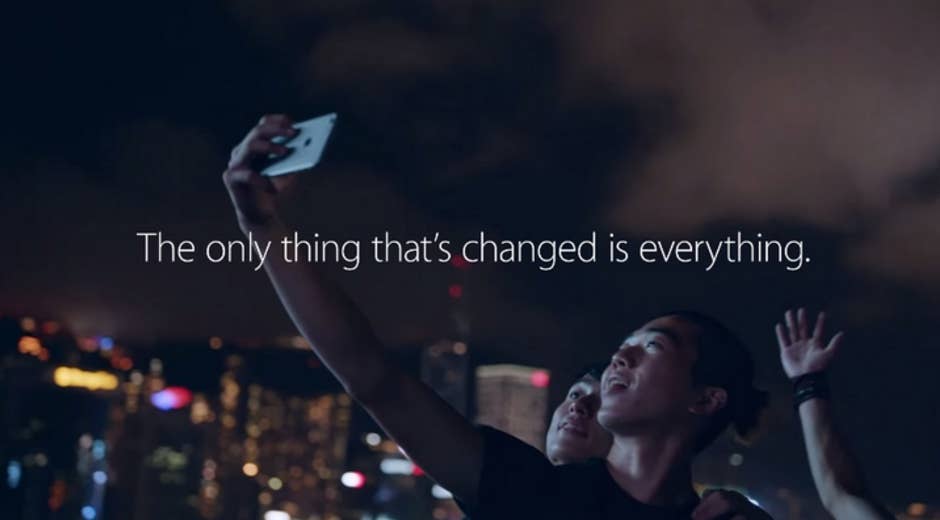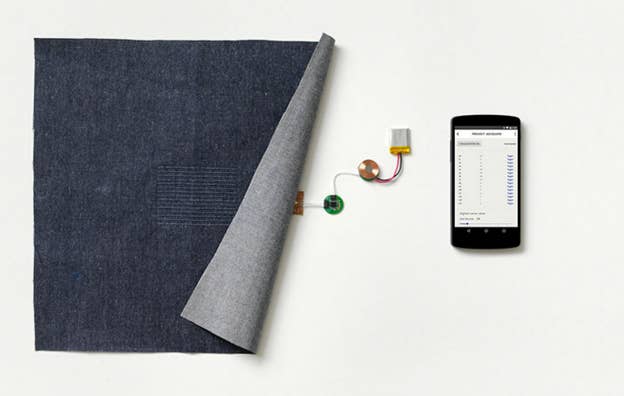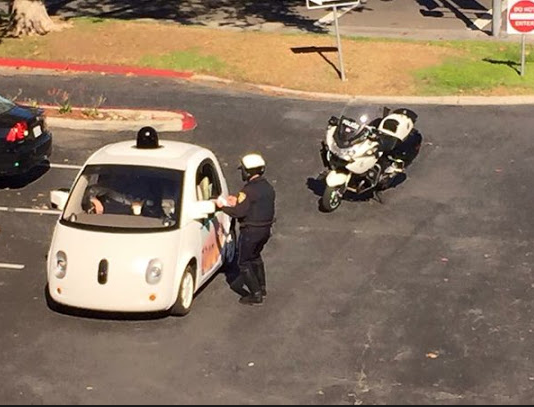
This past September, near the end of one of its marathon keynote events, Apple dimmed the lights to wrap up its presentation with a one-minute ad spot for the iPhone 6S. It’s vintage Apple: breezy, cross-cultural, feel-good, and trying just hard enough, with a couple of quick celebrity cameos from the likes of Bill Hader and Selena Gomez. “This is the iPhone 6S,” it begins, “not much has changed...except...” The next 50 or so seconds feature a remarkably well-lit and masterfully written gadget specs and features summary, ultimately concluding with the iPhone’s new tagline: “The only thing that’s changed is everything.”
It was savvy branding for one of Apple's iPhone S product cycles, where the company is touting a phone that, while outfitted with some new guts and a few bells and whistles, is pretty much visually identical to last year’s model. “The only thing that’s changed is everything” suggests a paradigm shift or a pivotal moment of some kind. It’s a little glib; a bit overblown. And maybe, despite best efforts, it still manages to leave you longing for next year's model. But above all it's a decent way to try to think broadly about the year that was in technology.
2015 was, like most years in tech, mostly iterative. Only it wasn't sold that way at all. The past 12 months felt like a constant barrage of The Next Big Thing, punctuated by occasional scandals, crises, and chan-fueled internet tire fires.
Yet with few exceptions, what we were excited or terrified about wasn't what we had, it was what we were just about to get. It was a year when the blueprint for the next decade seemed to come into focus, with long-promised stuff arriving in forms we could actually touch and feel and use (self-driving Teslas! VR newspapers! Hoverboards!). And yet the things that did arrive seemed like stopgaps — placeholders for the real future. We were living in the year of the Rio, waiting on the arrival of the iPod. We have become conditioned to have ridiculously high expectations for the transformative power of Silicon Valley — borne of desktop computing, and the World Wide Web, and the iPod, and iPhones, and Uber, and, Wi-Fi, (Wi-Fi!), and, Christ, you ungrateful git, Christ, even Google search. Do you remember being amazed by Google search? It was amazing. Once.
And yet all of that has led to this point where tech companies are boxed into making (or at least framing) promises that they can’t yet deliver.
The Apple ad and its catchphrase “The only thing that’s changed is everything” were a direct response to preposterously high expectations. It’s a reminder that, Even if you missed it, don’t worry, we can confirm that we wowed you with all this exciting newness! It’s blunt confirmation that you tuned into this keynote for a glimpse at the future and Apple, as usual, delivered. It’s all kind of silly, but it belies a bigger truth: To promise anything small in 2015 is certain failure. And, if you can’t deliver anything at all, make sure whatever it will eventually be appears jaw-dropping — show us a whale breaching in the middle of a basketball court.
Technology is always marching steadily toward this promise of the future, but recent years have seen the pressure for companies to ratchet up expectations enormously — in part due to the equally enormous valuations and market capitalizations based on those expectations. Moonshots aren't ludicrous ambitions for tech's major players, they're table stakes. (Literally — in the past few weeks both Jeff Bezos's Blue Origin and Elon Musk's SpaceX have successfully launched and landed reusable rockets!) Innovation is increasingly measured by the changes one company can make in the physical world, often by attacking and upending centuries-old industries like transportation, agriculture, and housing. The bar for building something new has been raised so high that companies must reveal something transformative or be dismissed as a disappointment. Iteration is tolerated, but only for so long.
And so, 2015 feels like the year where the future almost arrived. (Google made prototype pants that act like touchscreens!) We got whiffs of truly transformative technology only to be told it wasn't quite ready for us yet. (Or in some cases, that it may have been something of a sham all along. See: Theranos.)

In March we were treated to a preview of the future of our wrists, courtesy of Apple. The promise was many-fold: freedom from the tyranny of our phones and their dizzying array of notifications, creating a seamless layer between our bodies and our devices, and elevating wearable technology from a luxury to a commodity. Android, Pebble, and others had already been there, of course. Words like Fitbit Killer were bandied about. Nobody knew anything, but certainty abounded. The Apple Watch would fail or succeed spectacularly. The only thing that would change was everything.
More than six months later and very little has changed. Apple has said it wouldn’t reveal sales numbers, leaving analysts to make semi-educated guesses. One firm suggests sales since launch have increased from 3.6 million to 3.9 million in the most recent quarter. That same firm estimates that competitor Fitbit shipped an estimated 4.7 million devices in the third quarter. Further analyst numbers suggest the cheaper Fitbit alternative has consistently outsold the pricey-to-extremely-pricey Apple Watch. And all this makes sense, given that the true potential of the Apple Watch is still unclear. The potential contours of a transformative wrist-bound computing future are visible, but the particulars have yet to take form.
This year we watched as one-time hardware Moonshots rolled closer into our view from the future’s horizon. Earlier this month I strapped Microsoft’s $3,000 Hololens to my face and found myself immersed in a fantastic world overlaid with robot bugs and three-dimensional models of the solar system. But that moment was fleeting — a brief tease of an augmented future yet to come. When Microsoft unveiled Hololens last January, the company dubbed it the “next step” of computing, and there’s plenty of evidence to suggest that could be the case — someday. But right now, that next step is just a tightly controlled demo shown off to reporters in a faux living room.
Similarly, 2015 was the year that virtual reality took its most significant strides to date. After decades of disappointment, VR proved, in no uncertain terms, that it is hopping off its treadmill to nowhere and coming for us. Soon. But, much like the Hololens, so much of the virtual reality we saw this year smacked of proof of concept and novelty. Go to a VR event/press conference and you’ll hear VR’s rallying cry: "If you think that’s cool, just wait until you see what we’re going to be able to do in a few years!" Of course that future is easy to envision. Late this year, the New York Times dropped over one million virtual reality boxes on its subscribers’ doorsteps, delivering a small and novel preview of what may soon feel commonplace. But if 2016 is the year that virtual reality arrives, it will do so unevenly. Fully realized experiences like Oculus will be immersive, but their high price will make them exclusive. Meanwhile, more accessible VR experiences like the NYT-distributed Google Cardboard models will still largely feel unsatisfactory — a tease of what’s to come.
The same goes for artificial intelligence, which draws perennial chatter from industry observers. Consider M, Facebook’s attempt at AI butlery. Powered by some slick algorithms and a trove of data, M appeared to demonstrate almost sentient behaviors; M helped book flights, prank friends — it even lowered cable bills.
But we only had part of the story. While M was indeed backed by some ambitious AI, the bulk of the requests submitted to it were handled by real human beings — contract workers doing things that artificial intelligence cannot.

If you were one of a privileged few to ride in a self-driving car this year, you discovered that any vehicle strapped to the gills with LIDAR sensors and connected to Google’s cloud is arguably a better, more experienced driver than you’ll ever be. The rest of us were similarly wowed throughout the year with stats like: “Google’s cars have driven a total of 1.2 million miles on the road." In 2015 the once-ludicrous idea of autonomous vehicles suddenly seemed an inevitability. Any conversation about the promise of technology in 2015 probably, at some point, at least briefly mentioned self-driving cars as a yardstick by which to measure the industry. It’s perhaps the most tangible evidence of the future having arrived.
But aside from carefully rehearsed demos and admirable road test stats, autonomous vehicles have monumental hurdles to clear before they’re incorporated into our commutes. Difficult questions need to be asked — How is liability determined when an accident occurs? How will we keep them from getting hacked? Will they be fully autonomous or allow driver intervention? What happens to normal cars? — and dizzying logistics have to be dealt with. And if 2015 showed us the self-driving car’s potential, it also showed us how far we — the passengers — have to go to be trusted with the technology.
We’re aiming for a transportation revolution, but what we’ve got now are Tesla owners filming themselves while putting their vehicles on autopilot and climbing fully out of the driver’s seat.
Perhaps this all sounds depressing or short-sighted, but it really shouldn’t be. Bubbling underneath the frustration of a future just out of reach is a lot of hope and excitement for what’s next — maybe even light feelings of progress! It does however say everything about how breathless we’ve become in our insatiable request for the Next Big Thing. If you’ve trained your eye on the big, flashy, transformative breakthrough, then consumer tech in 2015 probably looked a lot like one of Apple’s S years: plenty to talk about and plenty new, but difficult from a bird’s-eye view to see how everything changed.
The last 12 months were less a year of undelivered promises or technological shortcomings than they were a year where our expectations and hype and optimism for something better down the line sometimes failed to align with reality. 2015 was a year in which we saw the future more clearly than ever, but still couldn't quite get to it. Sure, we finally have hoverboards* — but they still have training wheels.
*Author’s Note: Publicly remarking that hoverboards don’t actually hover will be punishable by law in 2016. Crazy, I know, but those are the rules.
